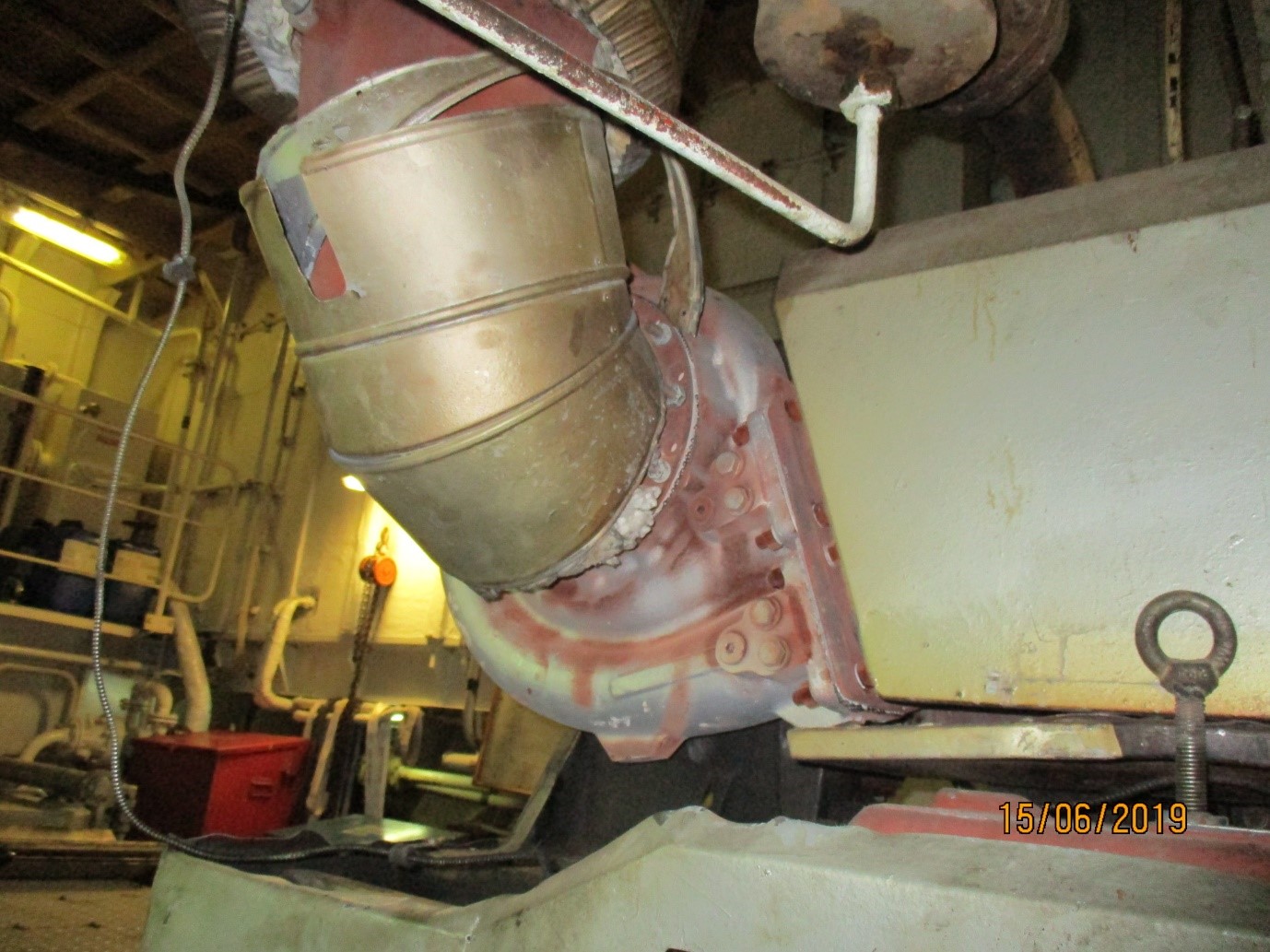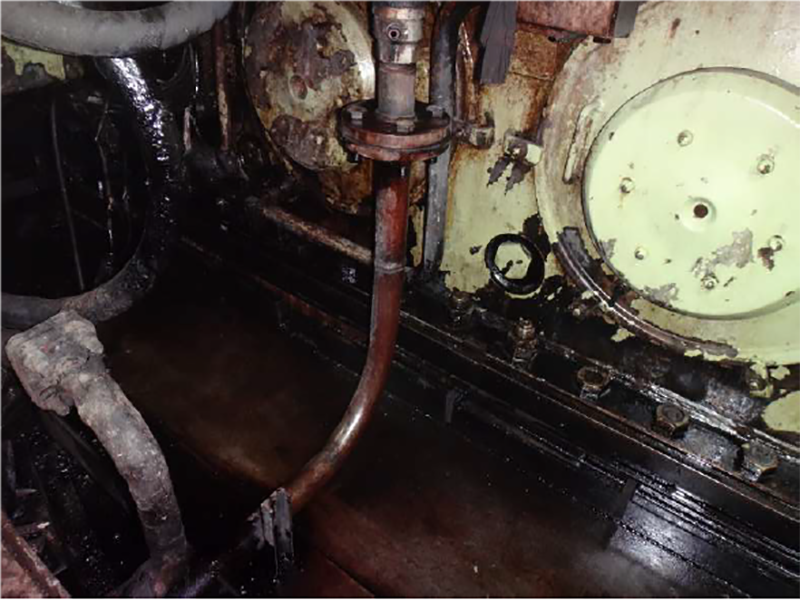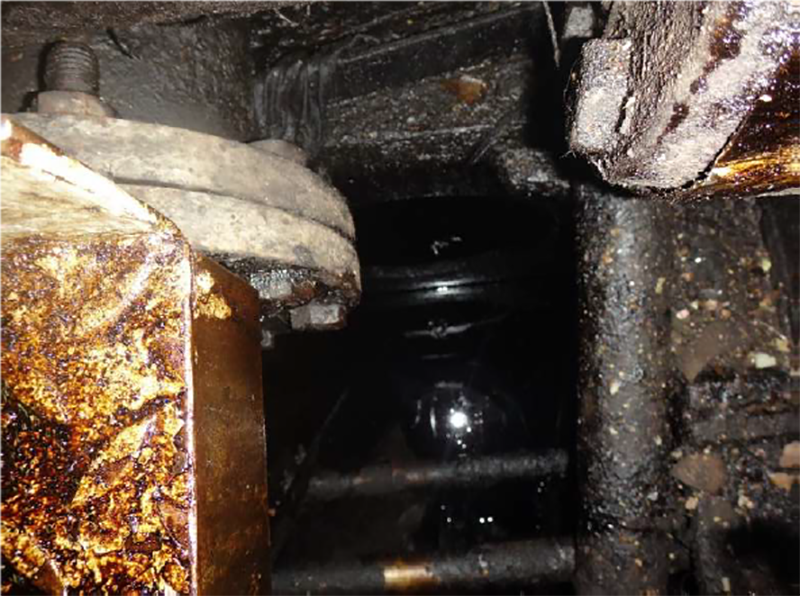Engine Room Fire Safety - Condition survey findings
Condition surveys conducted by the Club repeatedly expose worrying examples of substandard fire safety in engine rooms which are entirely avoidable.
Primary sources of ignition in the engine room include hot exhaust manifolds of engines, boilers and indicator valves of the engines. When flammable liquids leak on, splash over, or are sprayed onto an exposed high temperature surface they can auto-ignite. Reportedly up to 70% of all engine room fires are set off by fuel leaks. SOLAS Ch II-2 Reg 4 para 2.2.6 requires that surfaces with temperatures of 220°C and above must be properly insulated.
The importance of engine room cleanliness and a general fire safety culture cannot be overemphasized.



Dirty bilges, stained engine entablature and makeshift solutions such as leak collectors and plastic hoses may be set on fire by hot work such as welding or grinding. These will also provide an additional source of fuel to sustain and spread an engine room fire. Proper housekeeping along with the timely identification and elimination of oil leaks are of utmost importance for the prevention of fires in engine rooms.
Other key items which require constant attention of the crews and the managers are:
- Proper maintenance and use of fire doors. Frequently fire doors are found to be kept tied open, door self-closing devices are misadjusted and fail to close the door properly and door seals are torn or missing.
- Self-closing valves on oil tank level sight glasses are fixed in an open position and won’t close in case of fire.
- Fuel pipe quick closing valves not operational or wedged open preventing them from performing their function.
- Proper garbage management; oil soaked rags present a fire risk as they may be ignited by hot work in the vicinity, or may self-heat and ignite spontaneously.
- Oil soaked piping thermal insulation.
- Fire dampers and shutters inoperative / space served not marked / open-close position marking faded or unreadable.
- Fire escape routes and exits not marked conspicuously. Emergency Escape Breathing Devices in unserviceable condition or not sited in strategic positions.


The IMO’s circular MSC.1/Circ.1321 provides practical guidelines to prevent engine room fires.
Results of various engine room fire incident investigations can be found here